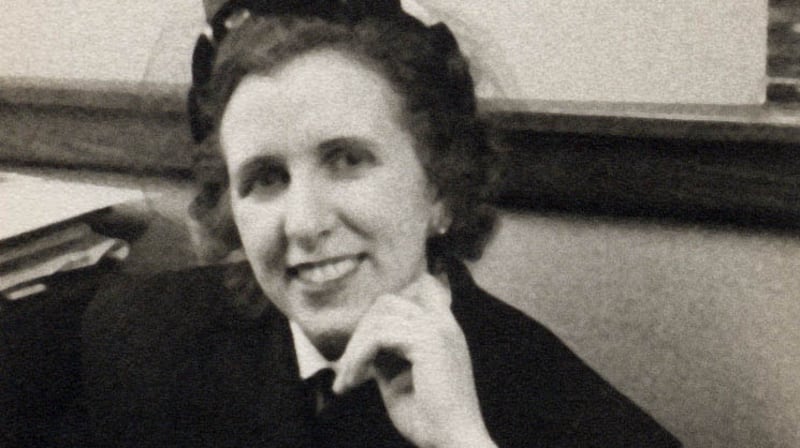In 2004, the pioneering computer programmer Kathleen ‘Kay’ McNulty Mauchly Antonelli reflected on her career: “All the years I gave talks about the ENIAC (Electronic Numerical Integrator and Computer), I always talked about it as John (Mauchly)’s story, not my story.” She was invited to give those talks as the widow of the co-inventor of the world’s first electronic general-purpose computer - not as an expert in her own right.
Kay’s passion for mathematics pre-dated her marriage to an eminent scientist in 1948, but social norms obliged her to continue her pioneering programming work unpaid, in the confines of the family home.
Kay was born in the shadow of Muckish Mountain, Co Donegal on February 12th, 1921. The bleak family farm was within walking distance of Creeslough village and the railway station that, in all likelihood, carried Kay and her family to the US in October 1924. Her father was arrested on the night of her birth for IRA membership - the War of Independence was ongoing - and spent the first two years of her life in prison. A year after his release, the family left Ireland for Pennsylvania.
At the time, Irish women were more likely to emigrate than Irish men, and early in life Kay enjoyed the opportunities that emigration presented. While Ireland’s national schools equipped many girls with skills that helped to make them successful emigrants, this was generally limited to basic arithmetic and domestic skills. In 1929, only 37 per cent of all Irish girls aged 14-16 were enrolled in school.
In Philadelphia, however, Kay attended High School, something that most Donegal girls could only dream of. She was a brilliant student, and won a scholarship to Chestnut Hill College for Women. Her mother encouraged her to do her best "to prove that Irish immigrants could be as good, if not better, than anybody."

Kay graduated from Chestnut Hill in 1942 with outstanding grades in maths, one of just three students to major in the subject. She longed for a job that would allow her to use maths, but dreaded teaching.
The women whose meticulous labour brought it to fruition were asked to act as hostesses "to greet all the big shots and show them around"
Again, war intervened. The US Army urgently needed mathematicians, and Kay was hired as a “computer”, calculating missile trajectories. She excelled at the slow, painstaking work and in 1945 was selected, with five other women, to work at Aberdeen military base in Maryland, developing the processor for a top-secret 30-ton machine called the Electronic Numerical Integrator and Computer (ENIAC).
ENIAC was a huge step forward in technology, but when it was publicly launched on February 15th, 1946, the women whose meticulous labour brought it to fruition were asked to act as hostesses “to greet all the big shots and show them around”. They were “refrigerator ladies”, standing beside the machine, looking good.
Kay was assigned another programming job in 1945, the details of which were far beyond her security clearance. She discovered later that her team had been testing the feasibility of the H-bomb.
Kay's pioneering work was only acknowledged decades later
As was standard at the time, Kay left paid employment when she married John Mauchly in February 1948. Her mother objected to the union on the grounds that Mauchly was not Irish or Catholic, was 14 years her senior, and was a widower with two children. On their honeymoon, he presented Kay with a cookbook, with the words: “You are our new cook”.
While cooking and raising seven children, Kay continued, uncredited, to programme the new computers that her husband developed.
Kay’s pioneering work was only acknowledged decades later.
In 1997, the six ENIAC women were inducted into the Women in Technology International Hall of Fame, and in 1999, a computer science prize in Kay’s honour was established at Letterkenny IT.
The story of the ENIAC women is still not widely known and, over 70 years on, gender inequality endures in science and technology.
This Extraordinary Emigrants article was written by Dr Angela Byrne, DFA historian-in-residence at EPIC The Irish Emigration Museum in Dublin’s Docklands, an interactive museum that tells the story of how the Irish shaped and influenced the world.
















